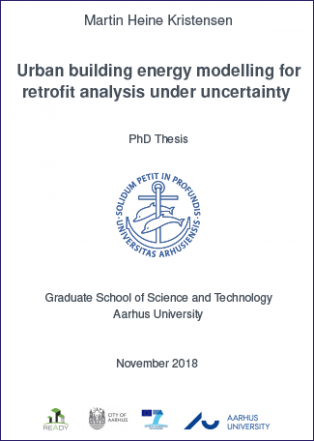Urban building energy modelling for retrofit analysis under uncertainty
Keywords:
Building, Archetype, Urban building energy modelling, District heating, Time series, Grey-box, BayesianSynopsis
Urban building energy modelling (UBEM) is a growing research field that seeks to expand conventional building energy modelling to the realm of neighbourhoods, cities or even entire building stocks. The aim is to establish frameworks for analysing combined urban e˙ects rather than those of individual buildings, which city governments, utilities and other energy policy stakeholders can use to assess the current environmental impact of our buildings, and, maybe more importantly, the future e˙ects that energy renovation programmes and energy supply infrastructure changes might have. However, the task of creating reliable models of new or existing urban areas is diÿcult, as it requires an enormous amount of detailed input data – data which is rarely available. A solution to this problem is the introduction of archetype modelling, which is used to break down the building stock into a manageable subset of semantic building archetypes, for which, it is possible to characterize their parameters. It is the focus of this thesis to explore and develop new methods for stochastic archetype characterization that can enable archetype-based UBEM to be used for accurate urban-scale time series analysis.
The thesis is divided into three parts. The first part acts as an introduction to case study data of the residential building stock of detached single-family houses (SFHs) in Aarhus, Denmark, which is used throughout the thesis for demonstration purposes.
The second part concerns the development of methods for archetype modelling. Bayesian methods for archetype parameter calibration are presented that incorporates the variability of the underlying cluster of buildings, and correlation between parameters, to enable informed predictions of unseen buildings from the archetype under uncertainty. The capabilities of archetype-based UBEM are further widened through the introduction of dynamic building energy modelling that allows for time series analysis.
The third part of the thesis is devoted to demonstrating the usefulness of the proposed archetype formulation as a building block for urban-scale applications. An exhaustive test scheme is employed to validate the predictive performance of the framework before establishing a city-scale UBEM of approx. 23,000 SFHs in Aarhus. It is used to forecast citywide heating energy use from 2017 up until 2050 under uncertainty of energy renovations and climate change.
Overall, the proposed archetype-based UBEM framework promises very useful for fast, flexible and reliable urban-scale time series analysis, including forecasting the effects of energy renovation or city densification, to establish an informed basis for energy policy decision-making.

